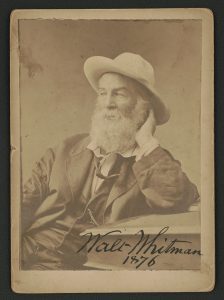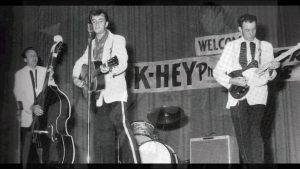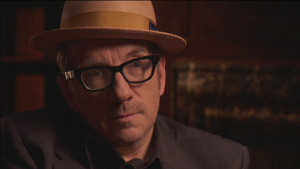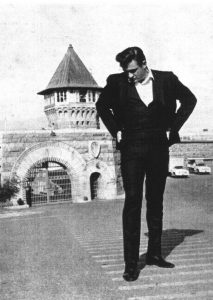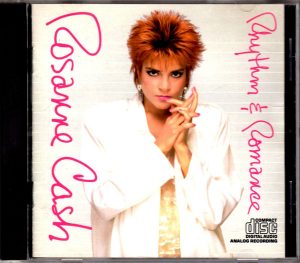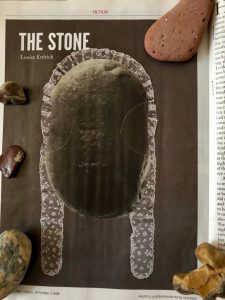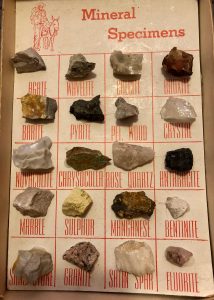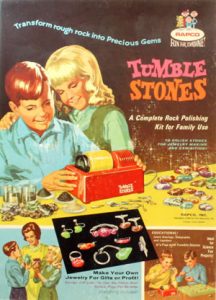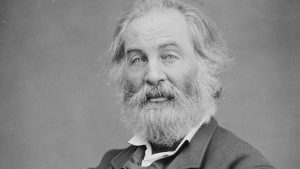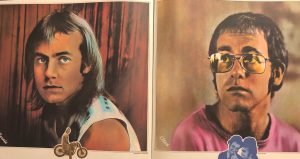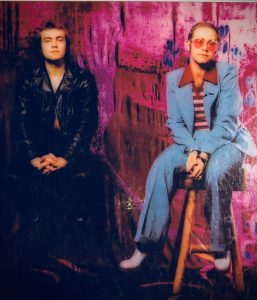
Born 96 years ago today in Savannah, American fiction writer Flannery O’Connor lived much of her life in the family farm house in Milledgeville, GA. I recently taught her short stories again in my courses on the American 1950s. O’Connor’s birthday and Flannery (this week’s American Masters program) have brought Milledgeville to the media again. The town’s other claim to fame is recently elected U.S. Representative Marjorie Taylor Greene, born there in 1974. O’Connor died in Milledgeville in 1964. Can you guess who said the following: a Flannery O’Connor character or Congresswoman Greene?
THE QUIZ:
- “You don’t want to cuss. You wanna talk in a very educated manner.”
- “In my time, children were more respectful of their native states and their parents and everything else. People did right then.”
- “See that? Our library is full of that.”
- “Why, I think there aren’t enough good country people in the world! I think that’s what’s wrong with it!”
- “You’ll find out one of these days, you’ll find out what Reality is when it’s too late!”
- “I really, truly pray this is true. This really may be happening. The level of importance is good versus evil.”
- “It’s ridiculous. It’s simply not realistic. They should rise, yes, but on their own side of the fence.”
- “I’m a very regular American.”
- “and then the militant, giant woman that’s bigger than my husband, bigger than most men, practically attacks me….”
- “She would of been a good woman, if it had been somebody there to shoot her every minute of her life.”

-MB
SOURCES:
Flannery O’Connor Documentary Wins New Award from Library of Congress (New York Times)
Flannery O’Connor, The Complete Stories
‘Nobody Listened to Me’: The Quest to Be MTG (Politico)
Trip Advisor
Answers: MTG: 1, 3, 6, 8, 9 FOC 2, 4, 5, 7, 10
FOC characters: 2 (the grandmother in “A Good Man Is Hard to Find”); 4 (Mrs. Hopewell in “Good Country People”), 5 (Mrs. May in “Greenleaf”), 7 (Julian’s mother in “Everything That Rises Must Converge”), 10 (The Misfit in “A Good Man Is Hard to Find”)





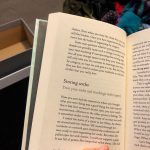



 Breaking social rules about what women could say in public, American confessional poets and standup comediennes sassed up the 1960s with their candid revelations. Spouses, children, and even parents were fair game for drawing nods and laughter from the audience. Offering peeks behind closed doors, such poets and comediennes worked family intimacies into their acts in ways that could provoke outrage. Anne Sexton and the fictional Mrs. Maisel drew fire from male critics who doubled down on the double standard. And they upstaged their male counterparts by dishing out grit while looking utterly fabulous. Both performers could rock a frock, each appeared on television, and each toured with a band. Can you match the correct woman with with her words, actions, or incidents below?
Breaking social rules about what women could say in public, American confessional poets and standup comediennes sassed up the 1960s with their candid revelations. Spouses, children, and even parents were fair game for drawing nods and laughter from the audience. Offering peeks behind closed doors, such poets and comediennes worked family intimacies into their acts in ways that could provoke outrage. Anne Sexton and the fictional Mrs. Maisel drew fire from male critics who doubled down on the double standard. And they upstaged their male counterparts by dishing out grit while looking utterly fabulous. Both performers could rock a frock, each appeared on television, and each toured with a band. Can you match the correct woman with with her words, actions, or incidents below?

